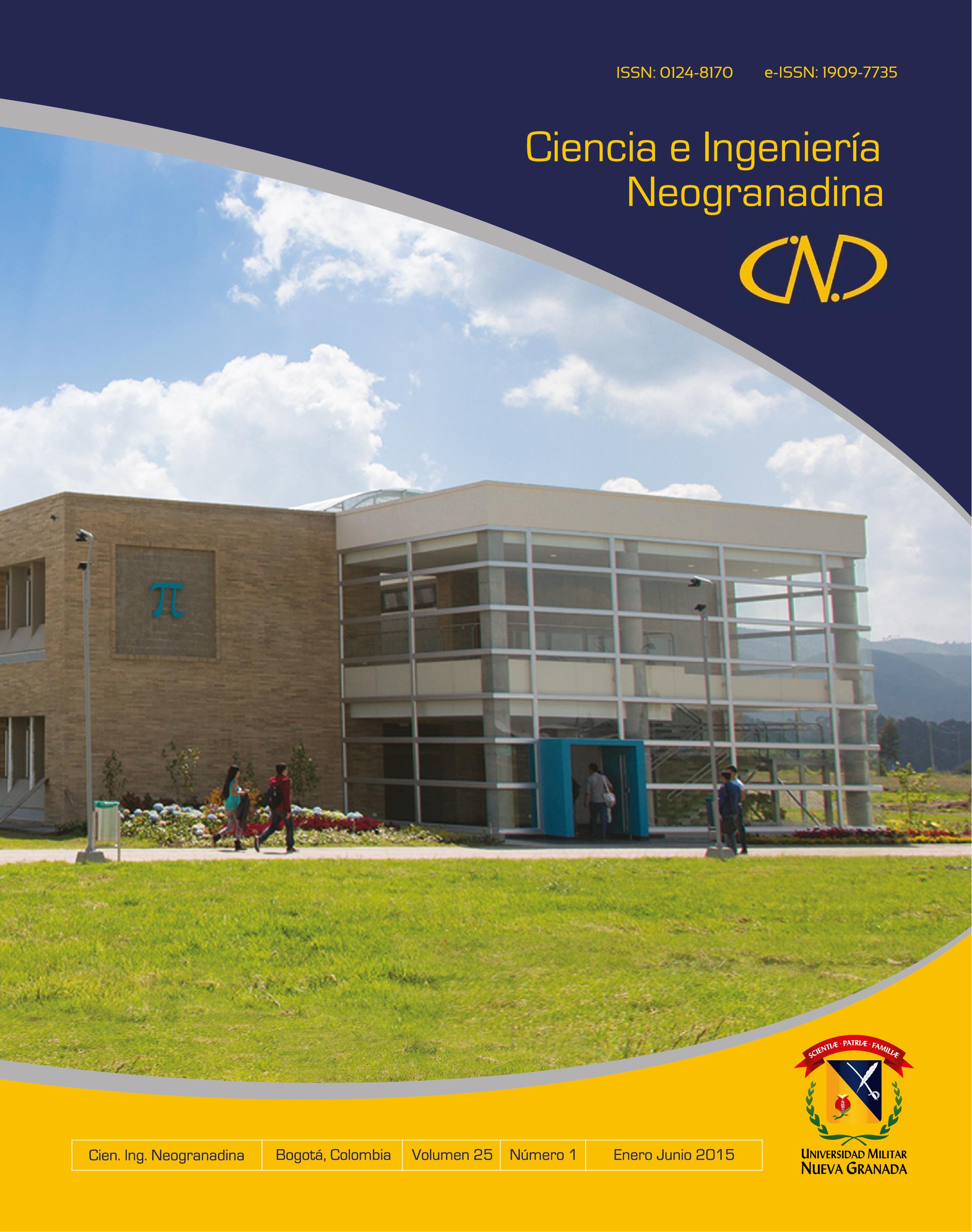Tratamiento de aguas residuales de una industria procesadora de pescado en reactores anaeróbicos discontinuos.
Resumen
En el presente trabajo se evaluó el tratamiento de las aguas residuales de una industria procesadora de pescado de la ciudad de Manta (Ecuador), en reactores anaeróbicos discontinuos, y se estableció su adecuación a las normas ambientales vigentes en materia de vertido. Para ello, se realizaron ensayos de laboratorio en reactores discontinuos de 1 L, con un tiempo de contacto de 24 h y provistos de un lodo anaerobio procedente de una planta de tratamiento de aguas residuales domésticas. Dicho efluente fue diluido con agua destilada en proporciones de 33%, 66% y 100%, correspondientes a las etapas I, II y III, respectivamente. Durante cada etapa se monitorearon los siguientes parámetros, de acuerdo con los métodos estándares: pH, alcalinidad total, DBO5.20, DQO, nitrito, amonio, nitrógeno total Kjeldahl (NTK), ortofostato, sulfato, sólidos suspendidos totales (SST) y sólidos suspendidos volátiles (SSV). Los resultados muestran porcentajes de remoción de materia orgánica, expresados como DBO5.20 (37.9±4.1%; 41.8±7.6% y 46.2±3.2%) y DQO (34.7±9.7%; 36.9±9.2% y 43.8±4.1%, para las etapas I, II y III, respectivamente), relativamente bajos como resultado del origen del inóculo usado, así como del contenido relativo de sales en el efluente industrial. Las remociones de amonio, NTK y ortofosfato estuvieron entre 60-95%, 25-37% y 6-25%, respectivamente. Bajo las condiciones de los ensayos realizados, el efluente tratado requiriere de la aplicación de un postratamiento para reducir el contenido de materia orgánica y nutrientes a los límites permisibles de descarga establecidos en la República de Ecuador.Descargas
Referencias bibliográficas
Lynch, G. (2007). Auditoría ambiental al proyecto de control de la contaminación del río Manta y su área de influencia de la empresa de agua potable y alcantarillado de Manta, EAPAM. Manta, Ecuador: Dirección de Auditoría de Proyectos y Ambiente de Manta. p. 71.
Chan, Y.J., Chong, M.F., Law, C.L. y Hassell, D.G., (2009). A review on anaerobic–aerobic treatment of industrial and municipal wastewater. Chemical Engineering Journal, 155, 1-18. http://dx.doi.org/10.1016/j.cej.2009.06.041
Chowdhury, P., Viraraghavan, T. y Srinivasan, A. (2010). Biological treatment processes for fish processing wastewater – A review. Bioresource Technology, 101, 439-449. http://dx.doi.org/10.1016/j.biortech.2009.08.065
Cristóvão, R.O., Botelho, C.M.S., Martins, R.J.E, y Boaventura, R.A.R. (2012). Chemical and biological treatment of fish canning wastewaters. International Journal of Bioscience, Biochemistry and Bioinformatics, 2, 237-242. http://dx.doi.org/10.7763/IJBBB.2012.V2.108
Muthukumaran, S. y Baskaran, K. (2013). Organic and nutrient reduction in a fish processing facility – A case study. International Biodeterioration & Biodegradation, 85, 563-570. http://dx.doi.org/10.1016/j.ibiod.2013.03.023
Latif, M.A., Ghufran, R., Wahid, Z.A. y Ahmad, A. (2011). Integrated application of upflow anaerobic sludge blanket reactor for the treatment of wastewaters. Water Research, 45, 4683-4699. http://dx.doi.org/10.1016/j.watres.2011.05.049
Nges, I.A., Mbatia, B. y Björnsson, L. (2012). Improved utilization of fish waste by anaerobic digestion following omega-3 fatty acids extraction. Journal of Environmental Management, 110, 159-165. http://dx.doi.org/10.1016/j.jenvman.2012.06.011
Chacín, E. (1993). Treatment characteristics of two phase anaerobic system using an UASB reactor (Tesis doctoral inédita). University of Birmingham, Birmingham Inglaterra.
Aloui, F., Khoufi, S., Loukil, S. y Sayadi, S. (2009). Performances of an activated sludge process for the treatment of fish processing saline wastewater. Desalination, 246, 389-396. http://dx.doi.org/10.1016/j.desal.2008.03.062
Xiao, Y. y Roberts, D.J. (2010). A review of anaerobic treatment of saline wastewater. Environmental Technology, 31, 1025-1043. http://dx.doi.org/10.1080/09593331003734202
Yang, J., Spanjers, H., Jeison, D. y van Lier, J.B., (2013). Impact of Na+ on biological wastewater treatment and the potential of anaerobic membrane bioreactors: A review. Critical Reviews in Environmental Science and Technology, 43, 2722-2746. http://dx.doi.org/10.1080/10643389.2012.694335
American Public Health Association (APHA), American Water Works Association (AWWA) y Water Environment Federation (WEF). (2005). Standard Methods for the Examination of Water and Wastewater (21th Edition). Washington, D.C. EE.UU.: American Public Health Association.
República de Ecuador. (2008). Libro VI, Norma de calidad ambiental y de descarga de efluentes: recurso agua. Anexo 1 (pp.286-340). Ecuador: Presidencia de la República de Ecuador.
Sankpal, S.T. y Naikwade, P.V. (2012). Physicochemical analysis of effluent discharge of fish processing industries in Ratnagiri India. Bioscience Discovery, 3(1), 107-111.
Tay, J.H., Show, K.Y. y Hung, Y.T. (2006). Seafood processing wastewater treatment. En L.K. Wang, Y.T. Hung, H.H. Lo y C. Yapijakis (Eds.), Waste Treatment in the Food Processing Industry (pp.29-66). Boca Ratón, FL, EE.UU.: Taylor & Francis Group. http://dx.doi.org/10.1002/chin.200613273
Sandberg, M. y Ahring, B.K. (1992). Anaerobic treatment of fish meal process waste-water in a UASB reactor at high pH. Applied Microbiology and Biotechnology, 36, 800-804. http://dx.doi.org/10.1007/bf00172198
Bai, H., Yang, Y., Quan, H., Han, Y., Sun, J. y Feng, Y. (2013). Bioremediation of copper-containing wastewater by sulfate reducing bacteria coupled with iron. Journal of Environmental Management, 129, 350-356. http://dx.doi.org/10.1016/j.jenvman.2013.06.050
Sarti, A. y Zaiat, M. (2011). Anaerobic treatment of sulfate-rich wastewater in an anaerobic sequential batch reactor (AnSBR) using butanol as the carbon source. Journal of Environmental Management, 92, 1537-1541. http://dx.doi.org/10.1016/j.jenvman.2011.01.009
Celis-García, L.B., Villa-Gómez, D., Alpuche-Solís, A.G., Ortega-Morales, B.O. y Razo-Flores, E. (2009). Characterization of sulfate-reducing bacteria dominated surface communities during start-up of a down-flow fluidized bed reactor. Journal of Industrial Microbiology and Biotechnology, 36, 111-121. http://dx.doi.org/10.1007/s10295-008-0478-7
Li, J., Yu, L., Yu, D., Wang, D., Zhang, P. y Ji, Z. (2014). Performance and granulation in an upflow anaerobic sludge blanket (UASB) reactor treating saline sulfate wastewater. Biodegradation, 24(1), pp. 127-136. http://dx.doi.org/10.1007/s10532-013-9645-2
Alexandre, V.M.F., Valente, A.M., Cammarota, M.C. y Freire, D.M.G. (2011). Performance of anaerobic bioreactor treating fish-processing plant wastewater pre-hydrolyzed with a solid enzyme pool. Renewable Energy, 36, 3439-3444. http://dx.doi.org/10.1016/j.renene.2011.05.024
Boardman, G.D., Tisinger J.L., y Gallagher D.L. (1995). Treatment of clam processing wastewaters by means of upflow anaerobic sludge blank technology. Water Research, 29, 1483. http://dx.doi.org/10.1016/0043-1354(94)00303-O
VyridesI y Stuckey, D.C. (2009). Adaptation of anaerobic biomass to saline conditions: Role of compatible solutes and extracellular polysaccharides. Enzyme and Microbial Technology, 44, 46-51. http://dx.doi.org/10.1016/j.enzmictec.2008.09.008
Yerkes, D.W., Boonyakitsombut, S. y Speece R.E. (1997). Antagonism of sodium toxicity by the compatible solute betaine in anaerobic methanogenic systems. Water Science and Technology, 36, 15-24. http://dx.doi.org/10.1016/S0273-1223(97)00502-7
Estevez, M.M., Sapci, Z., Linjordet, R. y Morken, J. (2014). Incorporation of fish by-product into the semi-continuous anaerobic co-digestion of pre-treated lignocellulose and cow manure, with recovery of digestate's nutrients. Renewable Energy, 66, 550-558. http://dx.doi.org/10.1016/j.renene.2014.01.001
Panswad, T. y Anan, C. (1999). Impact of high chloride wastewater on an anaerobic/anoxic/aerobic process with and without inoculation of chloride acclimated seeds. Water Research, 33, 1165-1172. http://dx.doi.org/10.1016/S0043-1354(98)00314-5
Aspé, E., Martí, M.C., Jara, A. y Roeckel M. (2001). Ammonia inhibition in the anaerobic treatment of fishery effluents. Water Environment Research, 73, 154-164. http://dx.doi.org/10.2175/106143001X138813
Andalib, M., Nakhla, G., McIntee, E. y Zhu J. (2011). Simultaneous denitrification and methanogenesis (SDM): Review of two decades of research. Desalination, 279, 1-14. http://dx.doi.org/10.1016/j.desal.2011.06.018
Cervantes-Carrillo, F., Pérez, J. y Gómez, J. (2000). Avances en la eliminación biológica del nitrógeno de las aguas residuales. Revista Latinoamericana de Microbiología, 42, 73-82.
Dapena-Mora, A., Campos, J.L., Mosquera-Corral, A. y Méndez, R. (2006). Anammox process for nitrogen removal from anaerobically digested fish canning effluents. Water Science and Technology, 53(12), 265-274. http://dx.doi.org/10.2166/wst.2006.429
Magrí, A., Béline, F. y Dabert, P. (2013). Feasibility and interest of the anammox process as treatment alternative for anaerobic digester supernatants in manure processing – An overview. Journal of Environmental Management, 131, 170-184. http://dx.doi.org/10.1016/j.jenvman.2013.09.021
Hong, C.C., Chan, S.K. y Shim, H. (2007). Effect of chloride on biological nutrient removal from wastewater. Journal of Applied Sciences in Environmental Sanitation, 2(3), 85-92.











